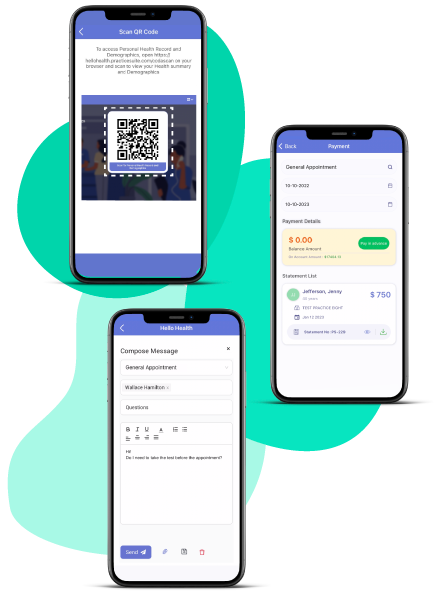The Struggles Patients Face Today and How Patient Engagement Can Help Overcome Them

The Struggles Patients Face Today and How Patient Engagement Can Help Overcome Them
Healthcare has become an integral part of modern society, but patients still face many difficulties. From long wait times to confusing billing systems, the experience can be overwhelming and frustrating for many.
Patient engagement is continuing to emerge as a solution for improving patient experiences and outcomes. Patients could take a more active role in their care and relieve many of these difficulties.
Long Wait Times and Limited Access to Care
Without a doubt, long appointment waiting times – especially with specialists – are among the biggest problems patients face today.
In some locations, treatments are weeks or months away. This delay in treatment could also worsen health conditions, leading to serious medical problems.
A second problem is poor access to care, especially among rural residents. Patients in such regions might need to travel far to see a physician or obtain treatment.
This geographic separation adds additional burdens, such as financial stress and missed time at work or home.
The Complexity of Today’s Healthcare Systems
Another major problem for patients will be the complexity of the medical system itself. From insurance paperwork to medical lingo, it can be overwhelming and confusing. Patient confusion about the cost of care contributes to unexpected bills and financial stress.
In addition, healthcare can be fragmented, threatening continuity of care. Patients may see several providers who do not always communicate effectively, leading to conflicting advice, redundant tests and uncoordinated treatment plans.
Emotional and Mental Health Concerns
Having a chronic condition, the discovery of a new diagnosis, or just navigating the healthcare system itself can be challenging for a patient’s mental and emotional health.
The stress of managing appointments, treatments, and medication schedules can cause anxiety and burnout.
Additionally, patients report a lack of empathy or emotional support from doctors and nurses, further depersonalizing their health journeys.
Communication with Providers is Limited
Effective care requires communication between patients and providers. Nevertheless, many patients say providers failed to hear or understand them.
Patients are often rushed through the appointments with little time for meaningful discussion.
Miscommunication also causes confusion regarding diagnoses, treatment options, and follow-up care. Some patients leave appointments confused or with questions about their overall health, leading to medication errors or failure to follow treatment plans.
How Can Patient Engagement Help?
Patient engagement can solve many problems facing patients in today’s healthcare system.
Patient engagement means empowering individuals to make informed medical choices and providing them with support and resources.
1. Empowering Patients with Information
Through patient engagement, we can close the healthcare complexity gap by delivering accessible and transparent information about health and treatment options.
These can be through educational content, intuitive patient portals, or communication tools that allow patients to access their medical records or communicate with their care team.
Informed patients are more likely to follow treatment plans, ask the right questions, and advocate for their own care.
2. Better Communication and Relationships
Patient involvement improves communication between patients and their care providers. In addition to scheduled visits, patients can seek out communication from their doctors via telemedicine platforms and secure two-way messaging systems.
This improves patient satisfaction and reduces medical errors or misunderstandings.
3. Shared Decision-Making
Patient engagement facilitates shared decision-making between patients and providers regarding treatment. This includes considering the patient’s beliefs, personal preferences, and way of life to provide personalized care.
Patients who are involved in their care tend to be more likely to follow treatment plans and experience better outcomes.
A Path Forward
Patient engagement provides a path forward despite the challenges most patients face in today’s healthcare system. It can improve the patient experience by giving information, communicating effectively, and including patients in healthcare decisions.
Providing patients with the digital tools they need to schedule appointments, pay securely, or register online can increase patient satisfaction and improve retention.
Putting patients first will drive better outcomes, increase patient satisfaction, and create a better healthcare system.

